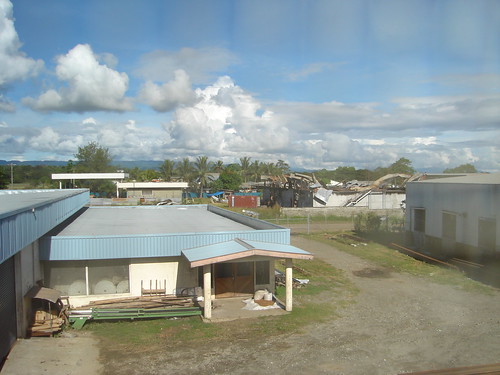
I finally got around to uploading the photos that I have of the riots in the Solomon Islands in 2006, as previously promised. I didn’t have a camera handy during the 2000 riots, which was a real shame, since groups of guys toting huge guns all over Honiara would have made for more spectacular sights, and even in 2006, I wasn’t about to take any silly risks, so these are really just photos of the aftermath. You can get much better photos of the whole thing from the BBC. I also won’t really go into the specific details of the political situation since that’s been covered by much better writers than myself.
The riots in 2006 happened after general elections that eventually put Snyder Rini into the Prime Minister’s seat. Mr. Rini had a rather unsavoury reputation, particular after his earlier stint as Finance Minister, so the word on the street was that as Prime Minister, he would be susceptible to bribes from the Chinese businessmen active locally. Or more susceptible that the norm in the Solomon Islands. Anyway, a crowd had been gathering near Parliament House to hear who would be the new Prime Minister, and when they heard that it would be Snyder Rini, they turned nasty and after being turned away by the Australian-led and supported police, descended onto the nearby Chinatown.

